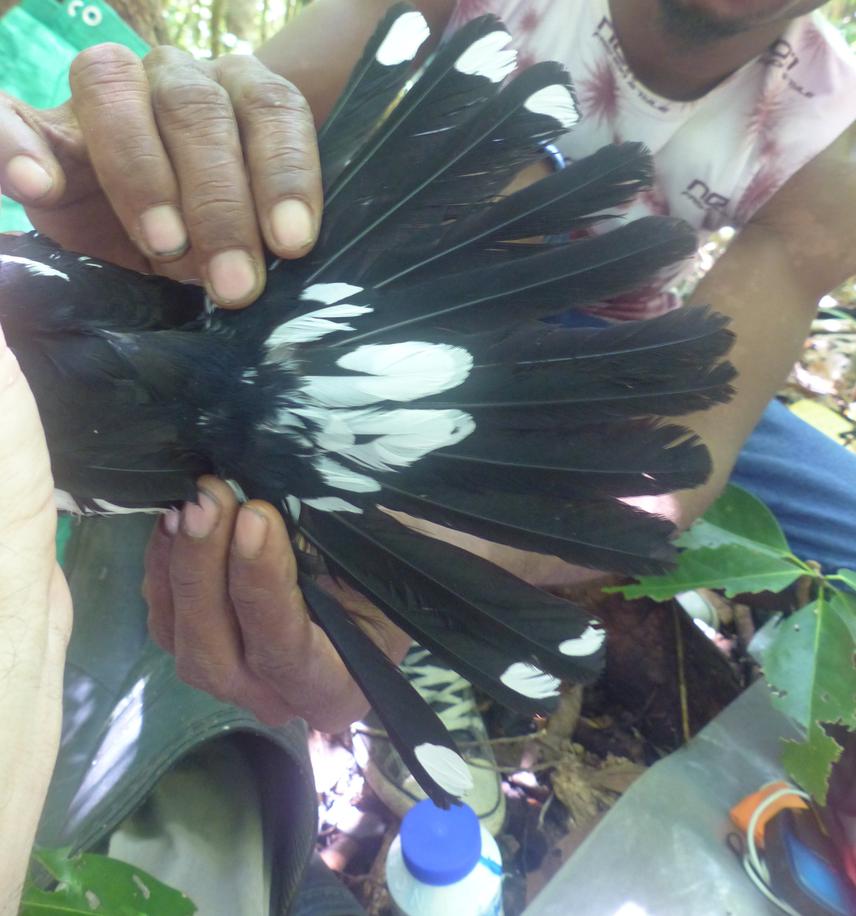William Goulding
Other projects
13 Nov 2013
Conservation of Endemic Birds in the Louisiade Archipelago, Papua New Guinea I
This project aims to continue our conservation research on the endemic birds of Sudest Island. We also aim to raise community awareness of bird conservation issues, and offer opportunities through employment and training.

Pole Adrian helping document Tagula Butcherbird tail plumage.
Islands often support high levels of endemism, either relict species or those generated through the effects of isolation and selection in unique insular ecosystems. These features can make island species susceptible to the changes associated with human activity. Loss of habitat and introduced predators, competitors and parasites negatively influence the success of different life history stages and reduce the effective population sizes of specialised endemic species. This has led to island endemic species representing the bulk of the bird extinction record.
Insular biodiversity in Melanesia is also increasingly threatened by climate change, rapid human population growth, increased resource use, and changing perspectives toward the natural environment. The Louisiade Archipelago of Papua New Guinea supports high levels of endemicity. Basic data useful for conservation status assessments is lacking for many of the endemic bird species and subspecies, especially on Sudest Island. We are aiming to improve knowledge of the avifauna of the island’s poorly known interior and noncoastal primary forest areas above 150m asl. This will include an identification of the key habitat needs, abundances and distributions of the endemic avifauna in these interior habitats.
Importantly, it will also improve knowledge of the virtually unknown single-island endemic White-throated White-eye (Zosterops meeki) distribution and abundance. This species was last collected in 1916 and is of conservation concern because its habits and distribution have remained largely unknown. Assessing these higher elevation areas will have long-lasting conservation value for predicting and informing in the face of global climate change, threatening pathogens and changing human pressures.
As a part of our project, we aim to inform and raise awareness amongst the local communities that ultimately determine the fate of critical forest habitat. We focus on the endemic biodiversity and island conservation issues specific to these islands. We conduct activities such as educational talks in conjunction with presenting informative posters to local schools and village communities. We also employ and train local residents to help on the project. Unfortunately, the remote location brings with it communication issues. It can be difficult to contact people from a distance. We are aiming to establish a better communication pathway to improve opportunities for local residents and to improve our ability to gather conservation related data.
In summary, we hope to improve the ongoing opportunities for local communities through long-term island conservation research.